Setup SQL Express Instance
This setup guide is for a basic new Ouvvi Instance on a Single Server using Windows Integrated Security and mostly default settings.
System Requirements
- .NET Framework v4.6.2
- Windows Server 2012 or Higher
- IIS 7.5+
- Microsoft SQL Server Express
- 2 GB RAM
- 1 CPU Core
- 50 GB Disk Space
Install Data Synchronisation Studio
Install the latest version of Data Sync from the Simego website https://www.simego.com/install/data-synchronisation-studio
The SQL Express Instance option is available on Data Synchronisation Studio Version 3.0.1110 and higher.
Install IIS Components
The default IIS configuration can be installed via PowerShell, either run the PowerShell script that is installed with Data Sync or run the script directly below to install the IIS pre-requisite components.
The PowerShell IIS Install script can be found in the following path %ProgramFiles%\Simego\Data Synchronisation Studio 3.0\PowerShell\IIs-Setup.ps1
#Install .NET Framework 4.6
Add-WindowsFeature NET-Framework-45-ASPNET
$features = ("IIS-WebServerRole", "IIS-WebServer", "IIS-CommonHttpFeatures", "IIS-HttpErrors", "IIS-ApplicationDevelopment", "IIS-NetFxExtensibility45", "IIS-WindowsAuthentication", "IIS-ISAPIExtensions", "IIS-ISAPIFilter", "IIS-ASPNET45", "Windows-Identity-Foundation")
# Enable IIS Features
Enable-WindowsOptionalFeature -Online -FeatureName $features
Install SQL Server Database Engine
Ouvvi can run on all editions of Microsoft SQL Server from LocalDB through to Enterprise Edition.
For this Instance download and install SQL Server Express from https://www.microsoft.com/en-us/sql-server/sql-server-editions-express
Note: This install assumes that your SQL Express instance name is SQLEXPRESS on the local machine, the PowerShell user has Admin rights to the SQL Instance and will create a new Database named the Ouvvi+instanceName (OuvviDefault) and grant
NT AUTHORITY\NETWORK SERVICEdb_owner rights to this database.
Install Ouvvi Instance
To install a new instance of Ouvvi, IIS WebSite, Windows Service and SQL Database need to be configured.
Run the PowerShell Script below to install a new Instance of Ouvvi. The settings below are the defaults and you may want to change them for your system.
#Import Ouvvi PowerShell Module
Import-Module OuvviAdministration
#Install Ouvvi Instance
Install-OuvviSqlExpress -targetPath C:\OuvviTenants\Default -iisAppName OuvviDefault -iisAppPoolName OuvviDefault -iisPortNumber 8080 -instanceName Default
If you do not wish to change any of the default settings you can run the PowerShell Script below:
Import-Module OuvviAdministration
Install-OuvviSqlExpress
Ouvvi DB Setup
Open your web browser to the Ouvvi Setup URL, for example the default URL would be http://localhost:8080/setup, to complete the Database Setup.
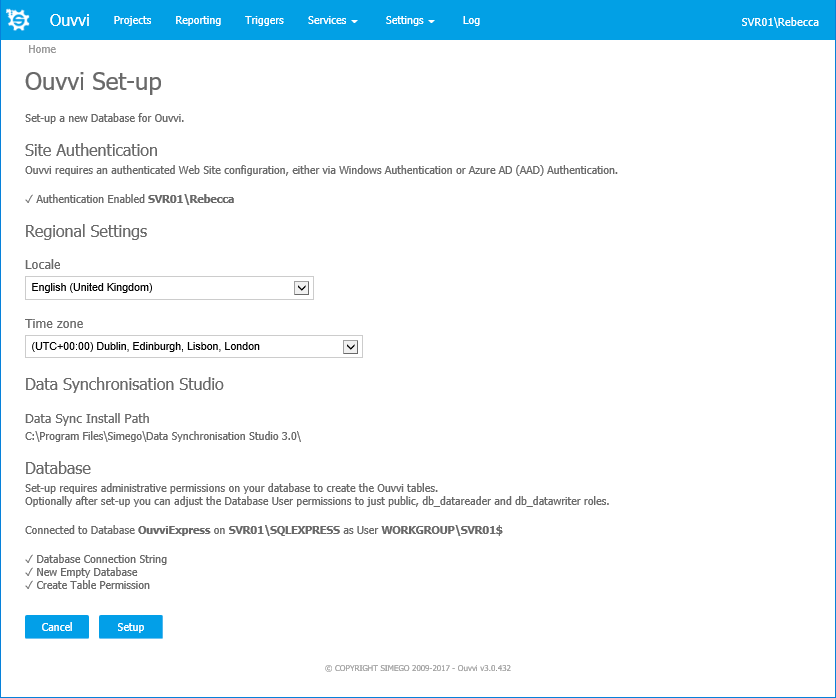
Verify the Setup configuration, select your Regional Settings and Time zone and then press Create Database for LocalDB or Setup for SQL Server.
Ouvvi Service Setup
Verify the Ouvvi URL is correct for the Windows Service open the configuration file <TENANTPATH>\Service\Simego.Console.Service.exe.config in a text editor and update the OuvviServiceUrl value if necessary. (default value is http://localhost:8080)
Next the Ouvvi Windows Service should be configured to run under a network domain account and started (this account will be used as the security context to run the steps) to do this open the services control panel (services.msc) and configure the Ouvvi Processing Service for your tenant and set the Startup type to Automatic (Delayed Start).
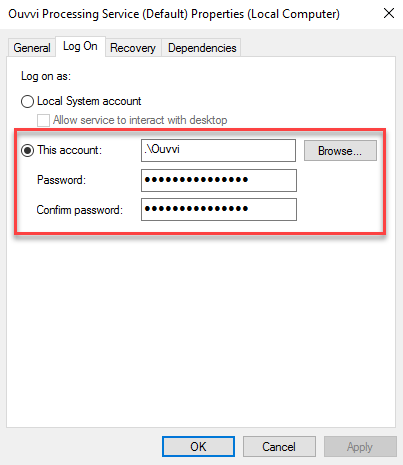
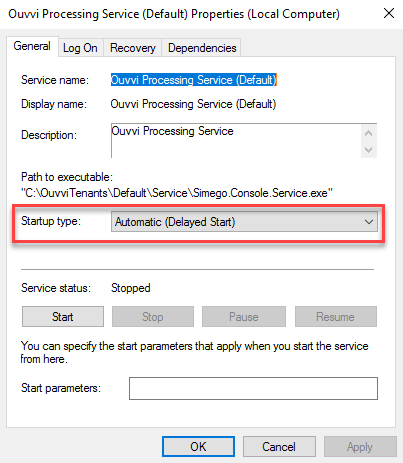
The Ouvvi Service can run under NETWORK SERVICE if you only need to connect to internet and local machine resources.
Services Running
Verify that your services are all running under Services->System Services green flags indicate that the service is running OK.
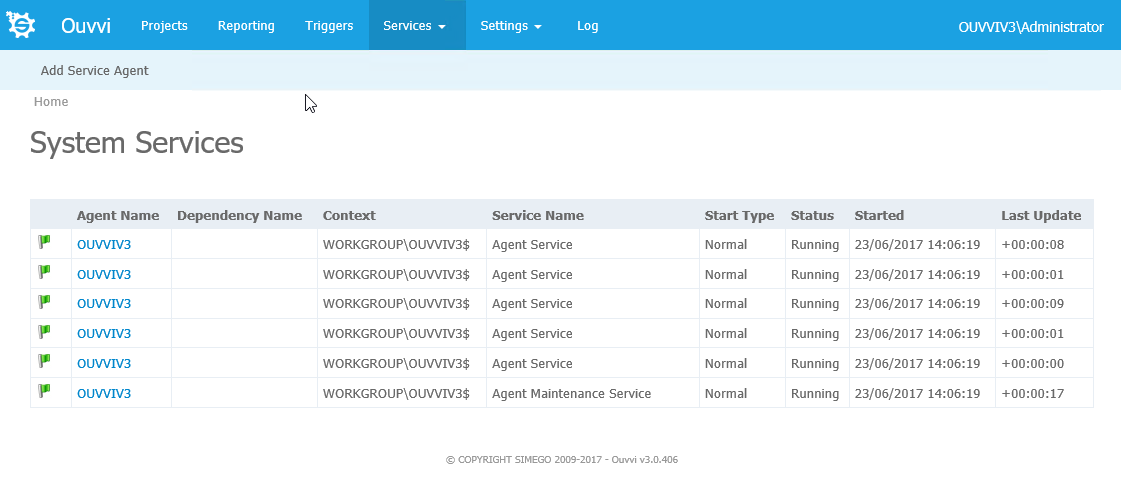
By default the service are configured to start on the local machine you can add new Service Agents here and define the machines that they should run on.
Ouvvi License Key
Ouvvi uses the same Data Synchronisation Studio Server license key as Data Sync.
To install go to Settings -> Register License, as shown below:
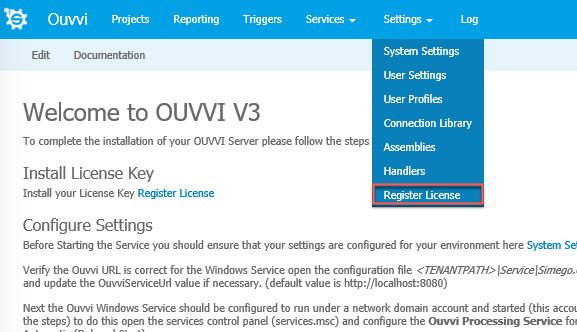
Then enter your license key into the box and click Activate.

Ouvvi will not run any projects and steps without a valid license key installed.
If you do not have an Internet connection and need to activate your key, please see our page on Manual License Key Activation.
